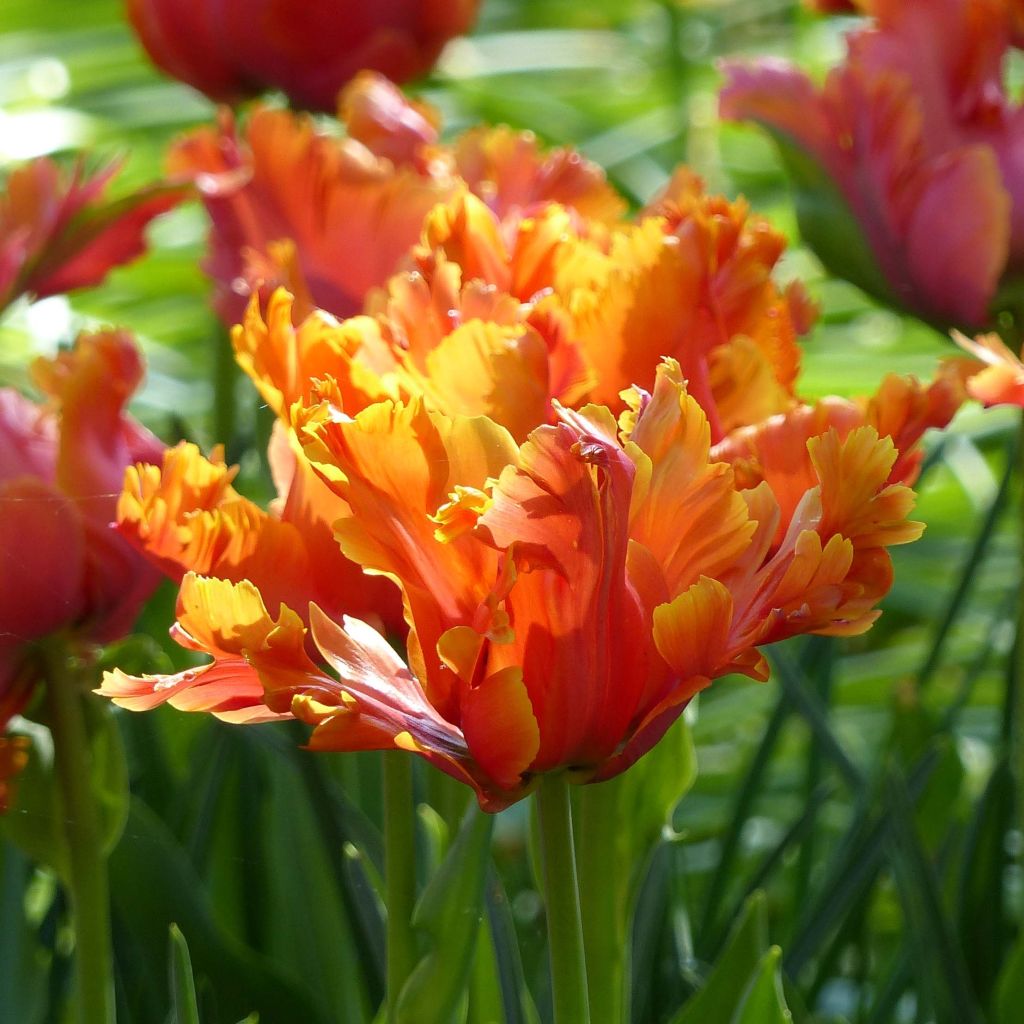

Tulipa Amazing Parrot
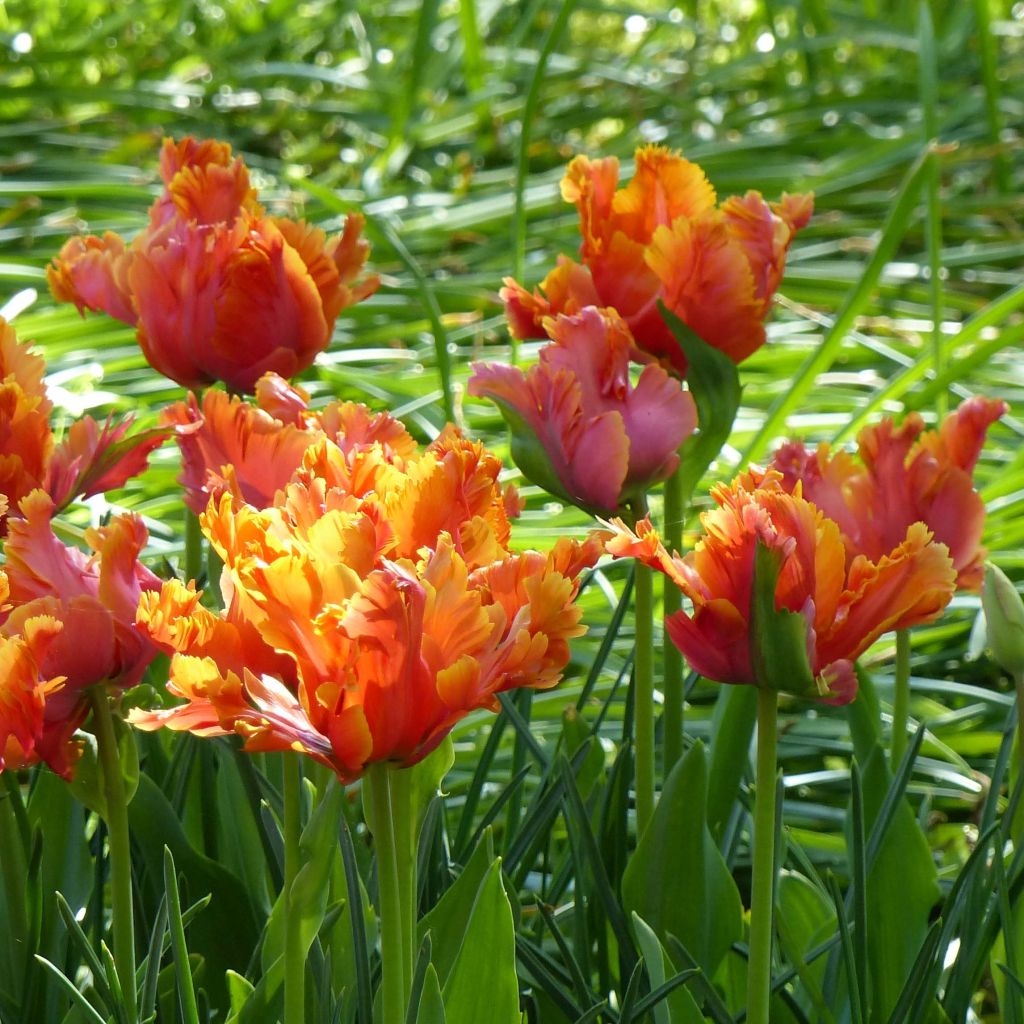

Tulipa Amazing Parrot
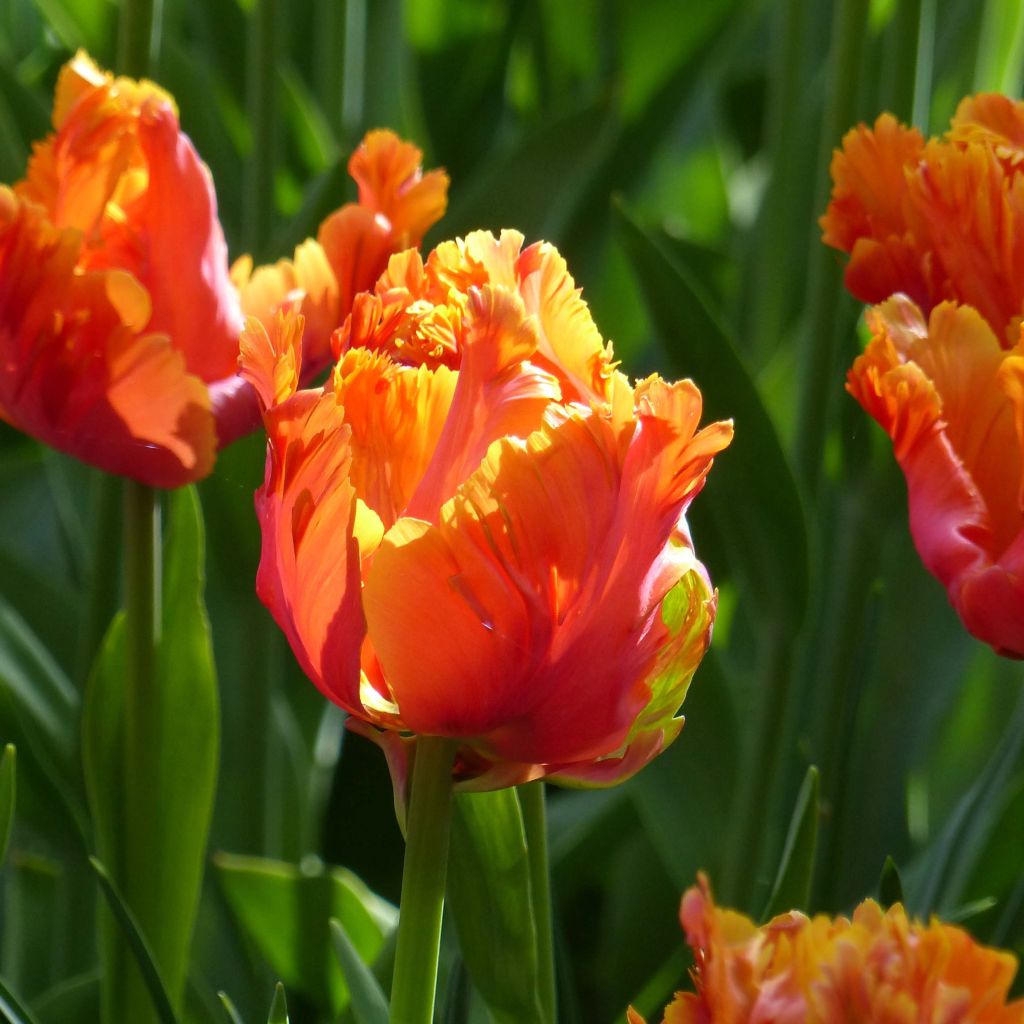

Tulipa Amazing Parrot
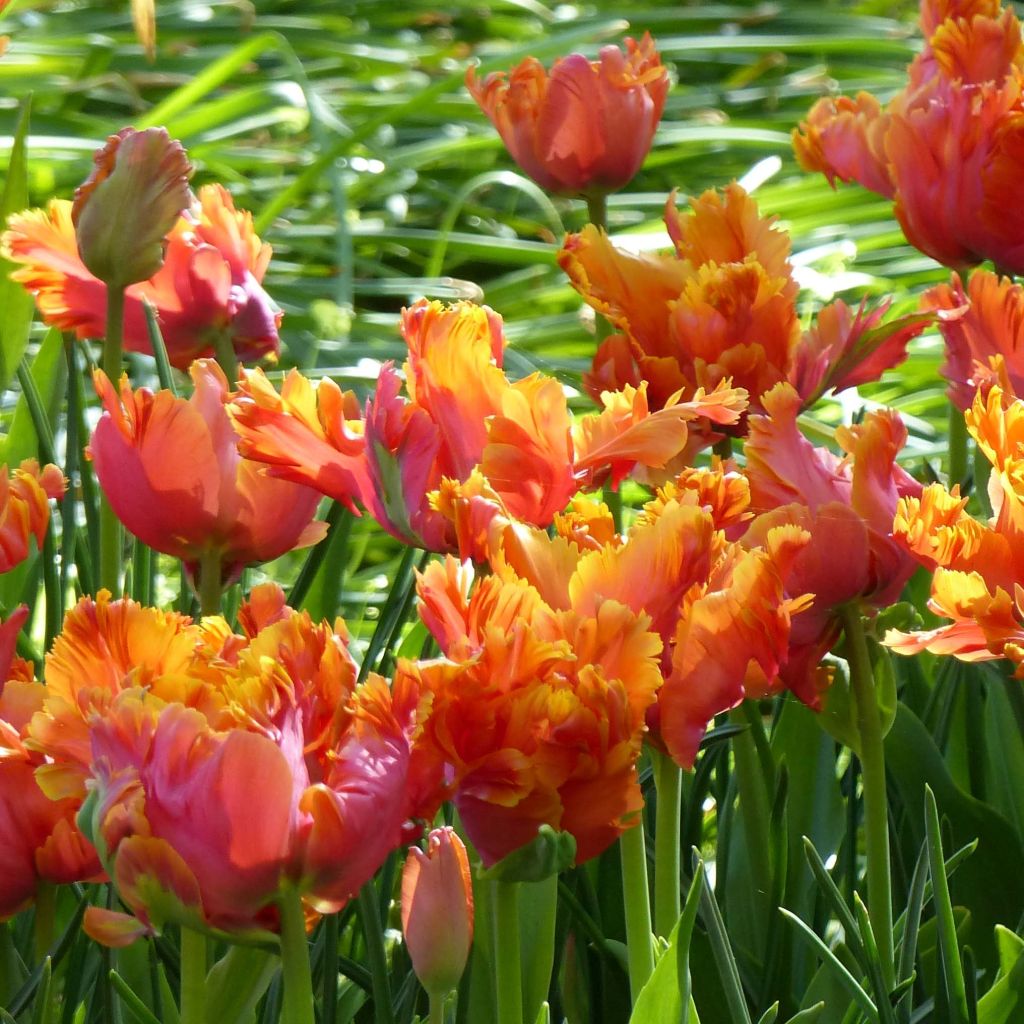

Tulipa Amazing Parrot
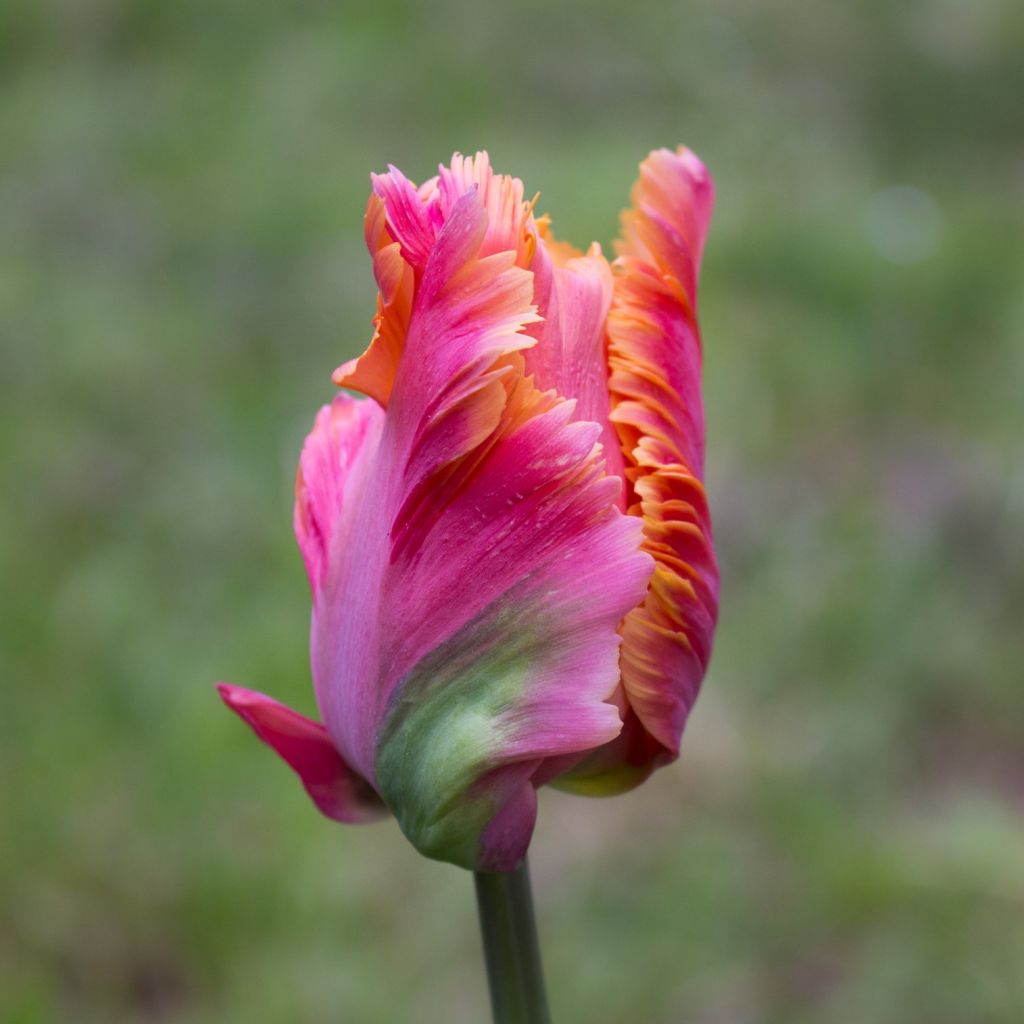

Tulipa Amazing Parrot
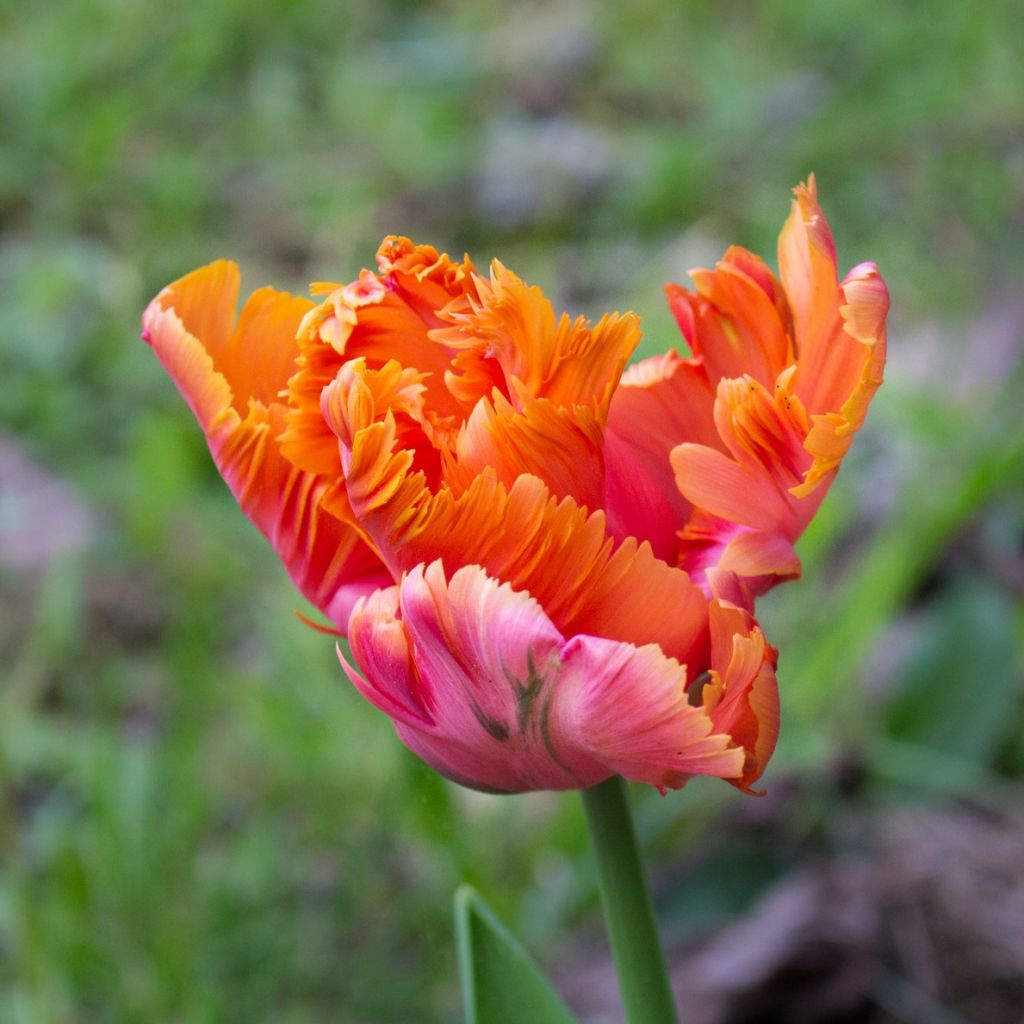

Tulipa Amazing Parrot
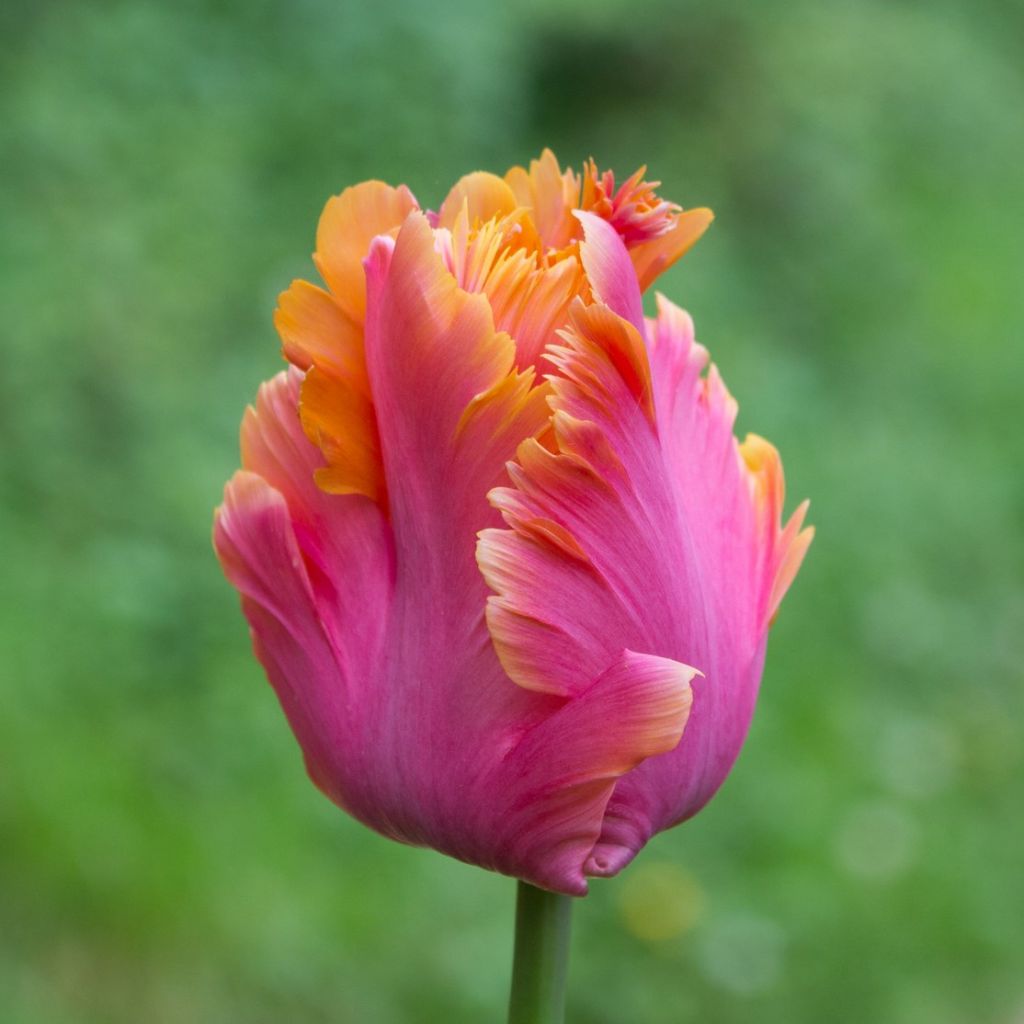

Tulipa Amazing Parrot
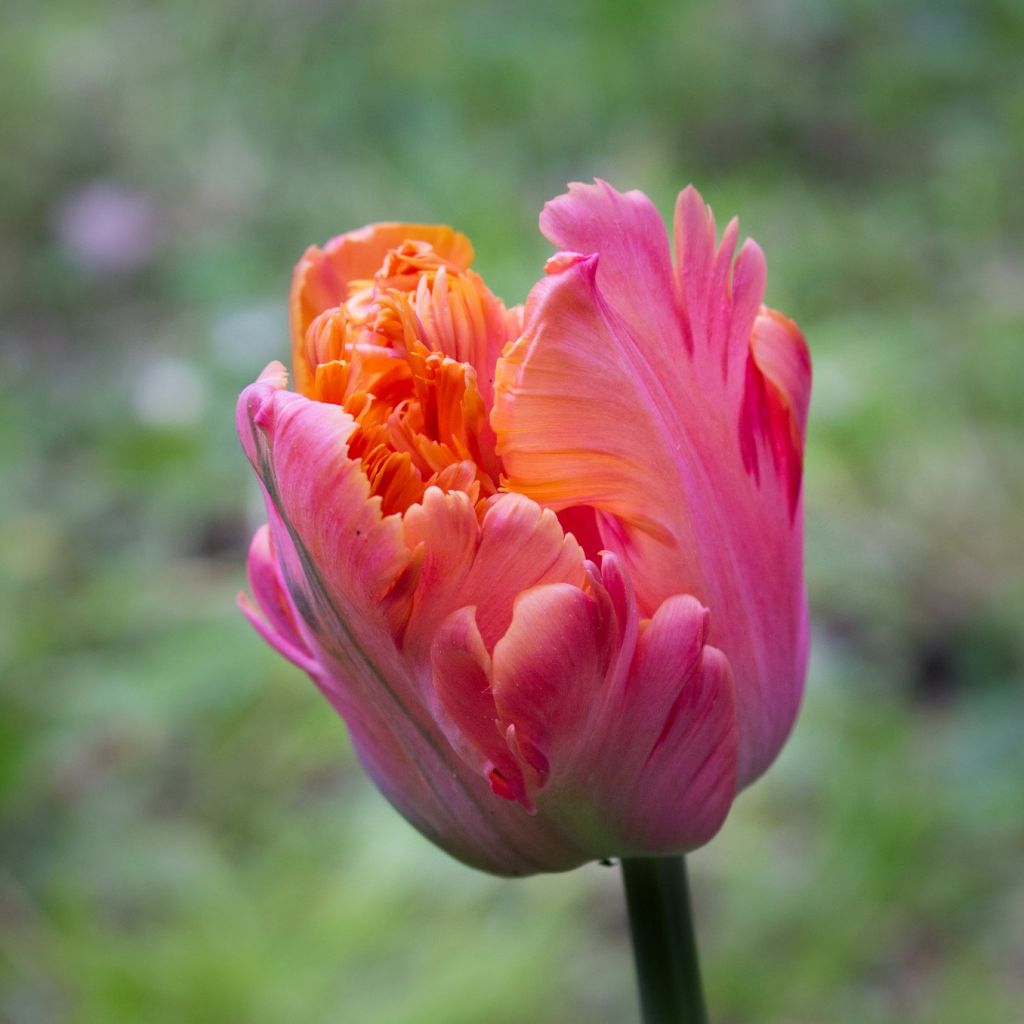

Tulipa Amazing Parrot
Tulipa Amazing Parrot
Tulipa Amazing Parrot
Tulip
Young plants received in perfect condition but awaiting planting...
Jacqueline B., 27/02/2023
This plant carries a 6 months recovery warranty
More information
We guarantee the quality of our plants for a full growing cycle, and will replace at our expense any plant that fails to recover under normal climatic and planting conditions.
From €5.90 for pickup delivery and €6.90 for home delivery
Express home delivery from €8.90.
Does this plant fit my garden?
Set up your Plantfit profile →
Description
This 'Amazing Parrot' parrot tulip, with its flamboyant ruffled plumage of cherry-red and yellow-orange, catches the eye and adds colour to your garden. It has large, shimmering flowers that seem to be illuminated from within by a warm yellow-orange glow. When fully open, the almost flat petals reveal a golden and orange throat. This variety with short but sturdy stems withstands the weather well. Simply astonishing, it deserves a special place in a flower bed or a pretty pot on the terrace. At home, it can be used to create voluptuous and fantastic bouquets, in the style of the Flemish masters.
The 'Amazing Parrot' Tulip belongs to the Liliaceae family. Originally from horticulture, introduced in 2014, it is currently classified in the group of 'parrot tulips', whose main characteristic is huge flowers with twisted, puffed, ruffled, and irregularly fringed petals. 'Amazing Parrot' is also obtained through mutation (sudden appearance of new characteristics that are maintained in subsequent generations). It is a stout 40 cm (16in) tall when in flower. Perched on the stems above the broadly lanceolate leaves, the stunning flowers, with a diameter of at least 15 cm (6in), are all different, in a palette of red-pink and orange mixed with a hint of yellow. The anthers are also highly contrasting, in very dark purple. Flowering takes place in late April or early May, towards the end of the tulip season.
Parot tulips with their rich colours and stunning and variegated flowers, which can be used both in flower beds and to enhance your bouquets, never cease to amaze tulip enthusiasts. In the 18th century, they were called 'monstrous' but this group became popular in the 1930s, when it was discovered that irradiating bulbs with X-rays caused this mutation. Today, they are among the most popular varieties for cutting, unmatched for bringing charm to pots or sunny gardens. Remember to consider the height and flowering period when designing your flower beds, as these parameters can vary significantly from one cultivar to another. It is a good idea to plant a few more bulbs for gorgeous cut flowers that last a long time in a vase.
Report an error about the product description
Tulipa Amazing Parrot in pictures
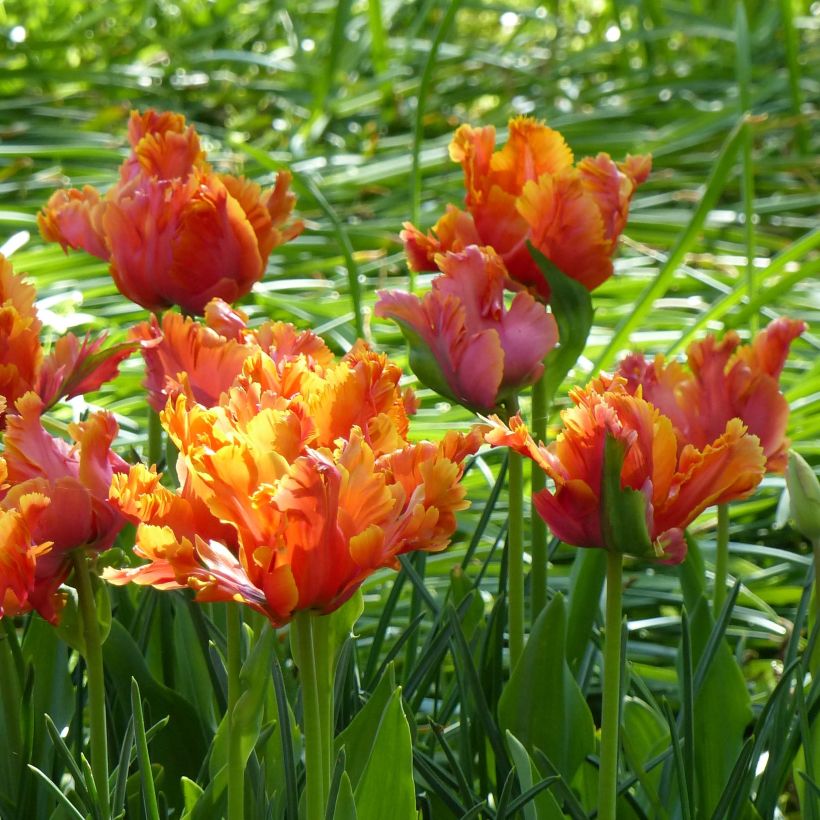

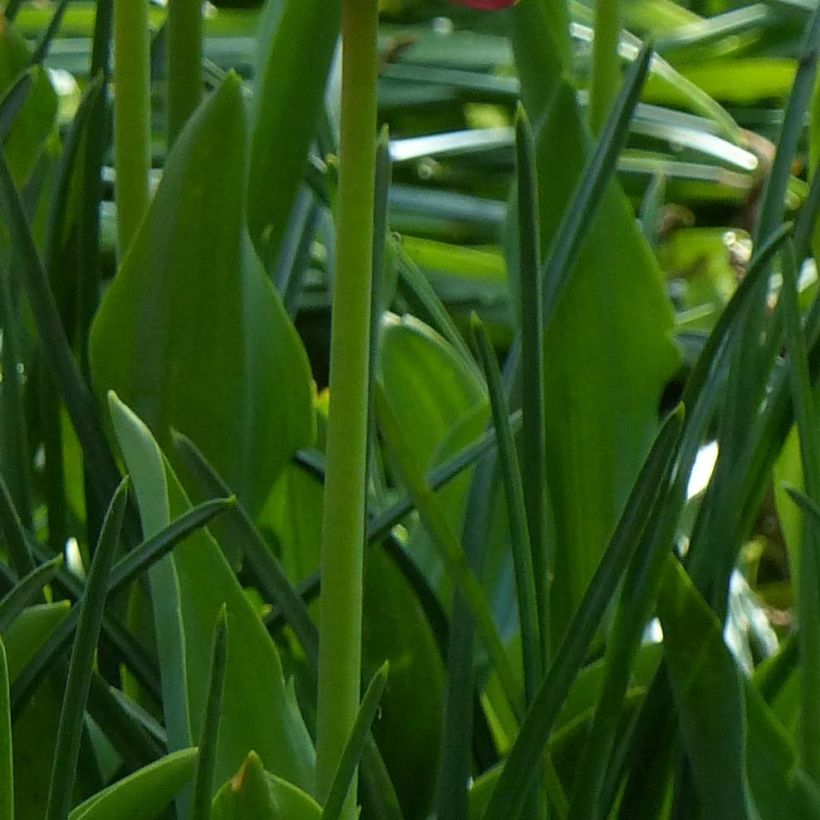

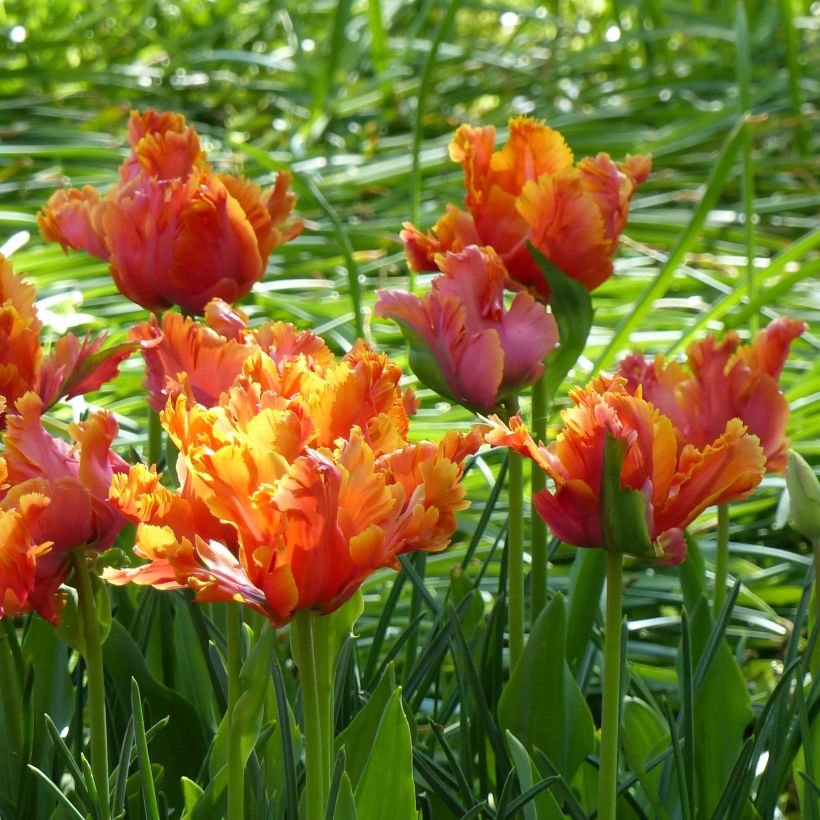

Plant habit
Flowering
Foliage
Botanical data
Tulipa
Amazing Parrot
Liliaceae
Tulip
Cultivar or hybrid
Planting and care
Plant the bulbs in the autumn, from September to December, 15 cm (6in) deep and 10 cm (4in) apart in regular, slightly acidic, neutral, or slightly alkaline, loose, well-worked, and well-draining soil. Never add poorly decomposed manure or compost to the planting soil, as this could cause the bulbs to rot. Amazing Parrot tulip will grow well in moist to dry soil, in a sunny or partially shaded location. Once flowering is finished, it is best to remove the seed heads to avoid exhausting the plant.
Planting period
Intended location
Care
-
, onOrder confirmed
Reply from on Promesse de fleurs
Haven't found what you were looking for?
Hardiness is the lowest winter temperature a plant can endure without suffering serious damage or even dying. However, hardiness is affected by location (a sheltered area, such as a patio), protection (winter cover) and soil type (hardiness is improved by well-drained soil).

Photo Sharing Terms & Conditions
In order to encourage gardeners to interact and share their experiences, Promesse de fleurs offers various media enabling content to be uploaded onto its Site - in particular via the ‘Photo sharing’ module.
The User agrees to refrain from:
- Posting any content that is illegal, prejudicial, insulting, racist, inciteful to hatred, revisionist, contrary to public decency, that infringes on privacy or on the privacy rights of third parties, in particular the publicity rights of persons and goods, intellectual property rights, or the right to privacy.
- Submitting content on behalf of a third party;
- Impersonate the identity of a third party and/or publish any personal information about a third party;
In general, the User undertakes to refrain from any unethical behaviour.
All Content (in particular text, comments, files, images, photos, videos, creative works, etc.), which may be subject to property or intellectual property rights, image or other private rights, shall remain the property of the User, subject to the limited rights granted by the terms of the licence granted by Promesse de fleurs as stated below. Users are at liberty to publish or not to publish such Content on the Site, notably via the ‘Photo Sharing’ facility, and accept that this Content shall be made public and freely accessible, notably on the Internet.
Users further acknowledge, undertake to have ,and guarantee that they hold all necessary rights and permissions to publish such material on the Site, in particular with regard to the legislation in force pertaining to any privacy, property, intellectual property, image, or contractual rights, or rights of any other nature. By publishing such Content on the Site, Users acknowledge accepting full liability as publishers of the Content within the meaning of the law, and grant Promesse de fleurs, free of charge, an inclusive, worldwide licence for the said Content for the entire duration of its publication, including all reproduction, representation, up/downloading, displaying, performing, transmission, and storage rights.
Users also grant permission for their name to be linked to the Content and accept that this link may not always be made available.
By engaging in posting material, Users consent to their Content becoming automatically accessible on the Internet, in particular on other sites and/or blogs and/or web pages of the Promesse de fleurs site, including in particular social pages and the Promesse de fleurs catalogue.
Users may secure the removal of entrusted content free of charge by issuing a simple request via our contact form.
The flowering period indicated on our website applies to countries and regions located in USDA zone 8 (France, the United Kingdom, Ireland, the Netherlands, etc.)
It will vary according to where you live:
- In zones 9 to 10 (Italy, Spain, Greece, etc.), flowering will occur about 2 to 4 weeks earlier.
- In zones 6 to 7 (Germany, Poland, Slovenia, and lower mountainous regions), flowering will be delayed by 2 to 3 weeks.
- In zone 5 (Central Europe, Scandinavia), blooming will be delayed by 3 to 5 weeks.
In temperate climates, pruning of spring-flowering shrubs (forsythia, spireas, etc.) should be done just after flowering.
Pruning of summer-flowering shrubs (Indian Lilac, Perovskia, etc.) can be done in winter or spring.
In cold regions as well as with frost-sensitive plants, avoid pruning too early when severe frosts may still occur.
The planting period indicated on our website applies to countries and regions located in USDA zone 8 (France, United Kingdom, Ireland, Netherlands).
It will vary according to where you live:
- In Mediterranean zones (Marseille, Madrid, Milan, etc.), autumn and winter are the best planting periods.
- In continental zones (Strasbourg, Munich, Vienna, etc.), delay planting by 2 to 3 weeks in spring and bring it forward by 2 to 4 weeks in autumn.
- In mountainous regions (the Alps, Pyrenees, Carpathians, etc.), it is best to plant in late spring (May-June) or late summer (August-September).
The harvesting period indicated on our website applies to countries and regions in USDA zone 8 (France, England, Ireland, the Netherlands).
In colder areas (Scandinavia, Poland, Austria...) fruit and vegetable harvests are likely to be delayed by 3-4 weeks.
In warmer areas (Italy, Spain, Greece, etc.), harvesting will probably take place earlier, depending on weather conditions.
The sowing periods indicated on our website apply to countries and regions within USDA Zone 8 (France, UK, Ireland, Netherlands).
In colder areas (Scandinavia, Poland, Austria...), delay any outdoor sowing by 3-4 weeks, or sow under glass.
In warmer climes (Italy, Spain, Greece, etc.), bring outdoor sowing forward by a few weeks.


































